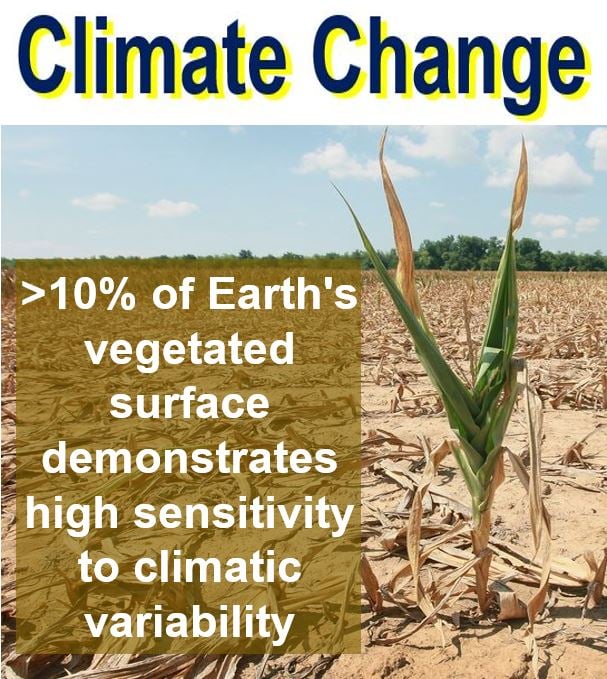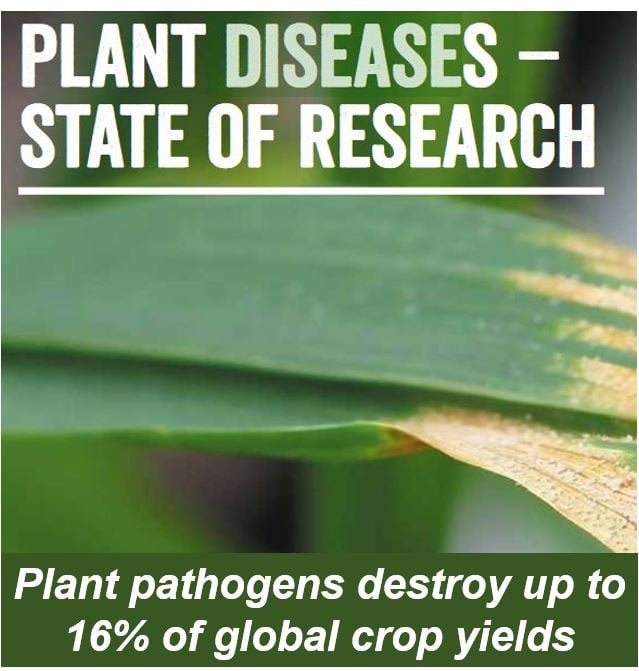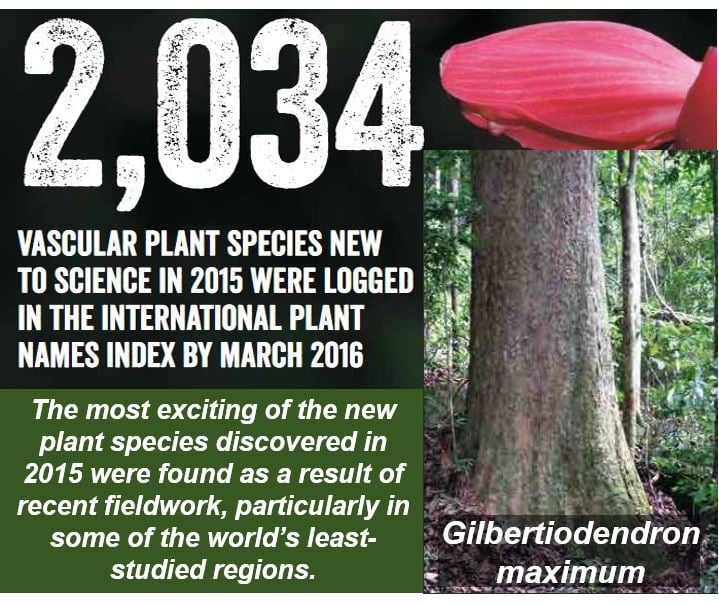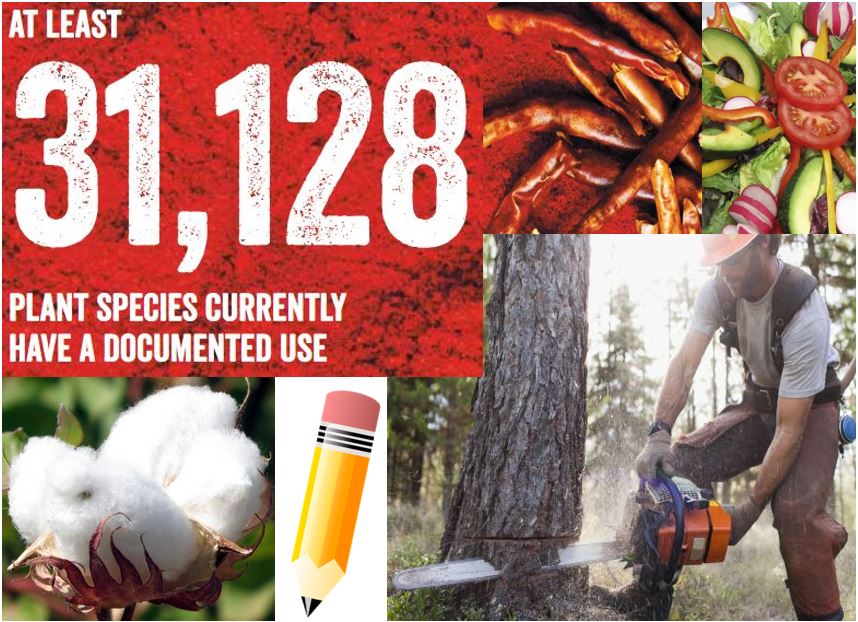While there are so many plants at risk of extinction across the globe – one in 5 of them – several are also discovered every year, says a new comprehensive report. However, the total number of plant species under threat far exceeds the new discoveries, says the Royal Botanic Gardens, Kew, in London.
Plants’ survival status are being undermined by several factors, including global warming, land-use change, invasive species, as well as diseases.
The authors of the new Report – State of the World’s Plants 2016 – add that international trade in endangered plants is also further worsening their medium-to-long-term outlook. It is crucial that international legislation is properly enforced.
 This comprehensive study of plant species across the world reports that over one fifth of them are at serious risk of extinction. (Image: adapted from kew.org)
This comprehensive study of plant species across the world reports that over one fifth of them are at serious risk of extinction. (Image: adapted from kew.org)
We need to take measures immediately, the authors urged, and make sure extra resources are focused in those parts of the globe where plant diversity is the greatest.
When the Report went to print, there were 391,000 different species of plants on Earth – 369,000 of them are flowering plants. This is the first study to factor in all the plants across the world, the authors said.
The loss of swamps, mangroves and other habitat changes have destroyed the survival status of literally hundreds of plant species. Thousands of other species are being harmed by climate change, disease and pests.
The impact of climate change on our plant species
Scientists say they have abundant data on how climate change has affected plant species in the advanced economies – Europe, North America, Japan, Australia and New Zealand. However, in the rest of the world there are vast areas where information is scarce.
 The Report says that over the past thirty years, changes to the climate have been evident at a scale and level of variability not seen for 850,000 years. (Image: adapted from wrc.org.za)
The Report says that over the past thirty years, changes to the climate have been evident at a scale and level of variability not seen for 850,000 years. (Image: adapted from wrc.org.za)
Where extensive data is available, researchers report that plants are flowering at different times – usually earlier in the year. Many species are migrating geographically into areas that used to be too cold, and away from regions that have become too hot or dry. They also found that turnover in plant communities in progressively-warming climates is changing.
According to the Report:
“All but one of the world’s biomes have experienced more than 10% change in land-cover type in the past decade due to the combined impacts of land-use and climate change.”
Disease and invasive species
According to iucn.org:
“Invasive alien species are animals, plants or other organisms introduced by man into places out of their natural range of distribution, where they become established and disperse, generating a negative impact on the local ecosystem and species.”
Alien species are invading huge areas of our planet. Of all the species we know about, five thousand are registered as invasive in global surveys.
These invasive species are spreading successfully at the expense of native plants. They disrupt local ecosystems, often cause considerable economic losses and jobs, and transform land cover.
Invasive species that are able to prevail, even when conditions become hostile, are the most ‘successful’ ones, and include plants that can survive as root buds, rhizomes, seeds and bulbs.
The Royal Horticultural Society (RHS) says that it cost about £70 million ($101 million) to clear the Olympic site in London of Japanese Knotweed (Fallopia japonica or Reynoutria japonica). Of every 100 invasive plants in Britain, sixty come from horticulture, the RHS informs.
In the UK, the rest of the European Union, the United States, and several other countries, it is an offence to plant a non-native species in the wild. It is also an offence to cause them to grow in the wild.
 The Report authors state that countries in Africa and Central & South American are vulnerable to plant disease, yet are currently subject to very little research. (Image: adapted from stateoftheworldsplants.com/report)
The Report authors state that countries in Africa and Central & South American are vulnerable to plant disease, yet are currently subject to very little research. (Image: adapted from stateoftheworldsplants.com/report)
Regarding invasive plant species, the Royal Horticultural Society makes the following comment:
“Many naturalised species do not present a problem but some that spread and outcompete native species can threaten ecosystems, habitats or native species – resulting in environmental or economic damage.”
“These are considered to be invasive either due to lack of natural control mechanisms (such as predators); rapid rate of spread (by seed or vegetatively) or suppression of other species (such as allelopathy – as with black walnut – or competition for resources).”
Diseases are also damaging the survival status of many plant species. New diseases are emerging every week across the world – they are caused by bacterial, fungal or viral pathogens.
While billions of dollars are spent annually on research to combat or prevent harmful diseases, most of the money is channeled to protecting the species in the world’s richest countries.
Every year new plant species discovered
A total of 2,034 new plant species were discovered globally last year. Examples include Gilbertiodendron maximum, a massive tree which reaches a height of 147.6 feet (45 metres) and has a mass of approximately 105 tonnes. This species is endemic to Gabon, West Africa.
Selenipedium dodsonii, a slipper orchid from northern Ecuador that reaches over 9 feet (3 metres) in length, was also discovered last year.
 New types of herbaceous plants, shrubs and trees have been discovered, including some new species from well-known horticultural families, food crops, grasses and carnivorous plants. (Image: adapted from stateoftheworldsplants.com/report)
New types of herbaceous plants, shrubs and trees have been discovered, including some new species from well-known horticultural families, food crops, grasses and carnivorous plants. (Image: adapted from stateoftheworldsplants.com/report)
Botanists at the Royal Botanic Gardens (Kew) discovered a new type of sweet potato last year, from the Ipomoea genus (Convolvulaceae family). It appears to be resistant to several diseases which today affect commercial sweet potato crops. They hope to use this newly-discovered species to create disease-resistant crops in future.
In the Malaysia/Indonesia region, a relative of the custard apple (sugar apple) was discovered, as well as ylang-ylang (Cananga odorata), from which an essential oil can be made, which sellers claim has medicinal properties.
Regarding the discovery of new plant species in 2015, and what it expects 2016 to be like, Kew wrote:
“2015 was a fantastic year for Kew Science: discovering and collecting new species and exploring their evolutionary relationships, uses and conservation. 2016 promises to be an even more prolific year, as Kew scientists push the frontiers of discovery and continue to work towards an exciting scientific strategy and vision.”
Plants have many different uses
Humans have been using plants for hundreds of thousands of years. We use them for food for us and for animals, making medicinal products, medical devices such as bandages, poisons, fuels, textiles and other materials, ink, paper, pencils, furniture, and even car tyres.
Humans smoke plants, and also use them as a source of genes.
 Humans have been consuming and using plants for different uses ever since we set foot on this planet.
Humans have been consuming and using plants for different uses ever since we set foot on this planet.
Regarding the relationship between humans and plants, the Royal Horticultural Society writes:
“The relationship between plants and people is a long and continuous one. We need plants for basic human purposes. We eat them in many forms; we make medicines, soaps, furniture, textiles, tyres and much more from them. Plants play a very important role in our lives.”
“Although we now live in a highly industrialised society, we have not lost this dependence on plants. We need to be aware of the part that plants play in our lives and must ensure that we care for these plants to continue this long relationship.”
Of all the plant species there are in the world, more than thirty-one thousand are used by people for something.
Video – Plant response to climate change
In this video, Prof. Johanna Schmitt, who works in the Department of Evolution & Ecology at the University of Calfironia, Davis, talks about how she and her colleagues predict plants will respond to ongoing climate change.
